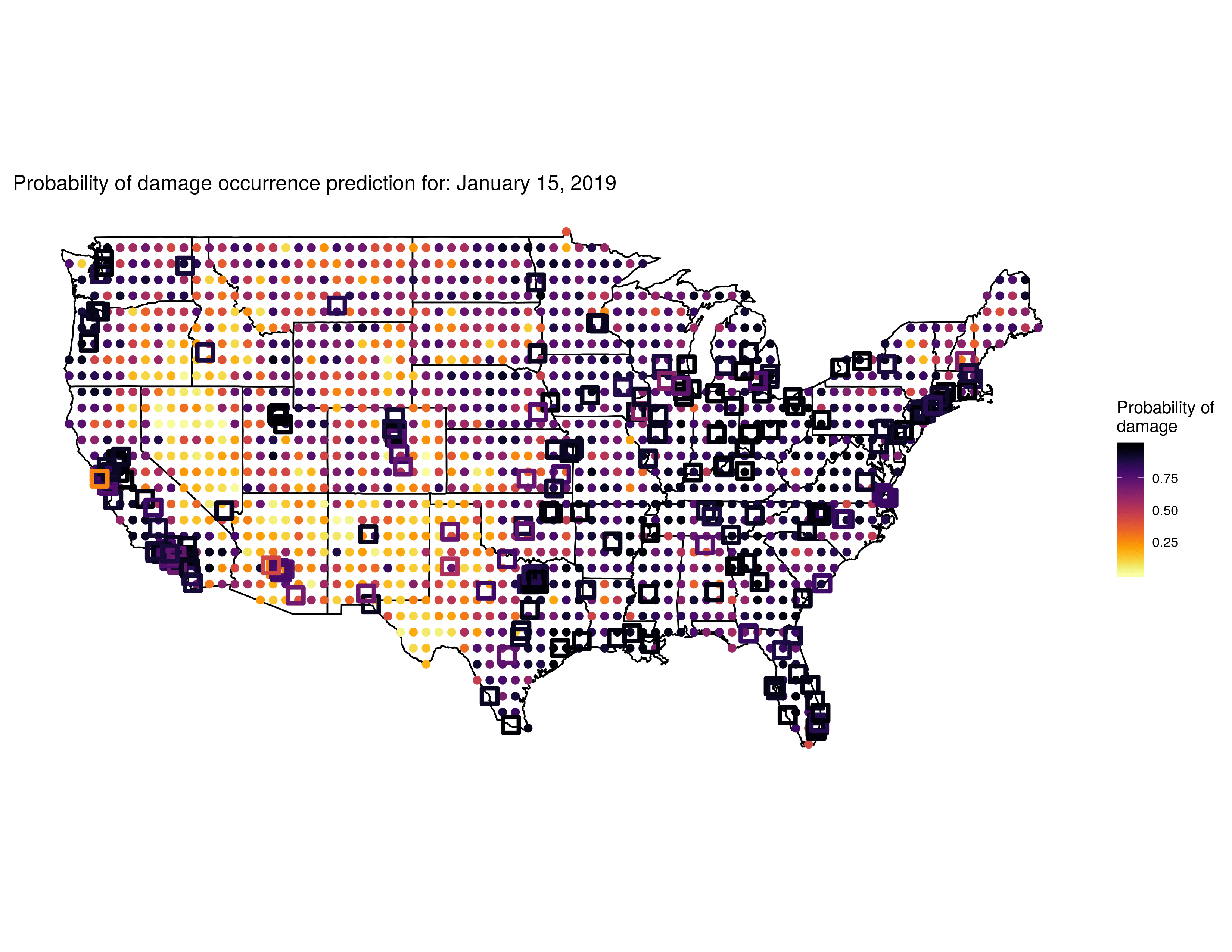Predicting property damage from tornadoes with zero-inflated neural networks
Tornadoes are the most violent of all atmospheric storms. In a typical year, the United States experiences hundreds of tornadoes with associated damages on the order of one billion dollars. Community preparation and resilience would benefit from accurate predictions of these economic losses, particularly as populations in tornado-prone areas increase in density and extent. Here, we use a zero-inflated modeling approach and artificial neural networks to predict tornado-induced property damage using publicly available data. We developed a neural network that predicts whether a tornado will cause property damage (out-of-sample accuracy = 0.821 and area under the receiver operating characteristic curve, AUROC, = 0.872). Conditional on a tornado causing damage, another neural network predicts the amount of damage (out-of-sample mean squared error = 0.0918 and R2 = 0.432). When used together, these two models function as a zero-inflated log-normal regression with hidden layers. From the best-performing models, we provide static and interactive gridded maps of monthly predicted probabilities of damage and property damages for the year 2019. Two primary weaknesses include (1) model fitting requires log-scale data which leads to large natural-scale residuals and (2) beginning tornado coordinates were utilized rather than tornado paths. Ultimately, this is the first known study to directly model tornado-induced property damages, and all data, code, and tools are publicly available. The predictive capacity of this model along with an interactive interface may provide an opportunity for science-informed tornado disaster planning.
PDF Abstract